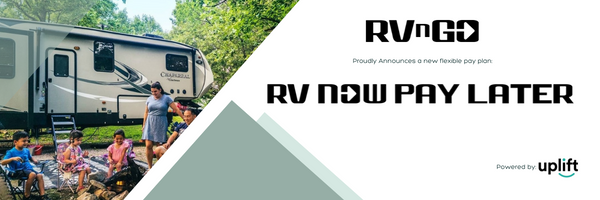Revamp Your RV: Transform Your RV Interior with These Upgrades and Tips!
Are you an RV owner looking to upgrade the interior of your RV? As exciting as it is to own an RV, it’s important to make sure that you’re comfortable and enjoying your living space while traveling. The good news is that upgrading your RV interior doesn’t require an entirely new unit or a full overhaul. There are several ways to update your space and make it your own with the help of interior design specialists.
An RV Interior Upgrade Might Be Right For You
First, consider why an RV interior upgrade might be right for you. Your RV is your home on wheels and should be comfortable, useful, and inviting. Sometimes, the best option to make your RV feel more like home is a simple, personal touch. It may be as easy as adding LED lighting to illuminate the space under your awning or a new shower head to conserve water. Upgrading your old sofa and chairs with new RV furniture can make a huge difference too. Don’t forget about outdoor spaces and RV kitchens either. Adding camp chairs or investing in new kitchen fixtures can also dramatically improve your RV camping experience.
Upgrading The Interior Doesn’t Have To Be A Challenge
Upgrading can be easy and cost-effective. Whether you’re looking to simplify, add lifestyle accents, change the interior color scheme, or redesign the furniture and layout, the options are plentiful. Adding window treatments to make heating and cooling your RV more efficient is one of the easiest RV upgrades to help you save money. A coat of paint is another easy upgrade that brightens up a room and makes it feel more inviting. You may just need to add home decor like a wall clock or strategically-placed adhesive hangers to make your RV more functional.
Your RV May Be Ready For An Update
It’s also important to consider the wear and tear that your RV experiences while on the road. You may begin to notice stains in your RV carpet, dings on the edges of kitchen cabinets and furniture, or worn seals on doors and windows. When designing new RVs, some manufacturers opt to reduce weight in lieu of durability, resulting in interior furniture and accessories that don’t necessarily stand the test of time. In this case, upgrading your interior can be more budget-friendly than buying a brand new RV and can increase your eventual asking price if you plan on selling or trading in your RV one day.
Your RV Furniture Shouldn’t Be Overlooked
When updating your RV furniture, be sure to measure the width of your RV door and the weight of the furniture. This is the most overlooked aspect of redesign and can stop you in your tracks if not done correctly. You can purchase RV-specific furniture items or source furniture made of lightweight materials from a vendor of your choice to ensure that you aren’t overloading your rig. Extra inches can mean a full transformation. Opening up your floorplan or adding storage space can greatly impact the atmosphere of your RV. Don’t overlook what an updated couch or end table can do for a tight living arrangement!
Painting The RV Interior Can Make A Dramatic Change
Transforming the interior of your RV can be as easy as adding a fresh coat of paint. However, finding the right paint can be a challenge. To begin, consult your RV manufacturer for paint brand recommendations that will work with your RV walls. Once you have the right paint, it’s time to get to work!
Before you start painting, take the time to prepare the space. Tape off all the areas you don’t want to paint, such as cabinet edges, flooring seams, and places where interior appliances or accessories come into contact with the walls. You should also cover your furniture and countertops to protect them from any drips or spills.
To ensure your paint adheres correctly, it’s important to prime your walls. If you plan on keeping the original wallpaper, priming the walls is crucial. It may take multiple coats, but it’s worth the effort. Once you’ve primed, it’s time to start painting.
Here are three additional tips to help make your painting project a success:
- Choose the right brush – Using a high-quality brush will help you achieve a smoother, more even finish.
- Apply thin coats – It’s better to apply several thin coats of paint rather than one thick coat. This will help you achieve a more professional-looking finish.
- Let the paint dry completely – Make sure to let each coat dry completely before applying the next one. This will help prevent the paint from peeling or cracking and ensure a long-lasting finish.
By following these tips and taking your time, you can easily transform your RV’s interior with a fresh coat of paint.
Replacing RV Flooring Can Have The Longest Impact
Are you tired of the old, dingy carpet in your RV? It’s not only unattractive, but it may also harbor allergens and dander that can impact your health. Fortunately, you can replace your RV flooring with alternative options that are both durable and easy to clean.
No. You won’t use tile. While tile flooring can be a great option for residential homes, it may not be the best choice for RVs. Here are a few reasons why:
- Weight: Tile is much heavier than other types of flooring materials, which can be a significant issue for RVs. Every pound counts in an RV, and adding the weight of tile flooring may impact the vehicle’s fuel efficiency and overall performance.
- Installation: Installing tile flooring is a complex process that requires specialized tools and skills. It can be challenging to install tile in an RV, particularly in small spaces where precise cutting and fitting are necessary.
- Fragility: Tile is a relatively fragile material that can crack or break easily, particularly in an environment where the flooring may be subject to constant movement and vibration. If a tile does crack or break, it can be difficult to replace in an RV setting.
- Maintenance: Tile requires regular maintenance to keep it clean and free of grime and stains. In an RV environment, where space and resources may be limited, maintaining tile flooring can be a challenge.
Wood Plank Flooring is not a good option either. While natural wood flooring is a popular choice for residential homes, it may not be the best option for RVs. Here are a few reasons why:
- Weight: Like tile, natural wood flooring can be quite heavy, which can be a concern in an RV. The added weight can impact the vehicle’s fuel efficiency and overall performance.
- Durability: Wood flooring can be susceptible to damage from moisture and extreme temperatures, which can be an issue in an RV environment where the floors may be subject to constant movement and changes in temperature.
- Maintenance: Wood flooring requires regular maintenance to keep it clean and free of scratches, stains, and other damage. In an RV environment, where space and resources may be limited, maintaining wood flooring can be challenging.
- Cost: Natural wood flooring can be expensive, particularly if you choose a high-quality hardwood. For many RV owners, the cost of installing wood flooring may be prohibitive, especially when there are more affordable options available.
For these reasons, many RV owners opt for alternative flooring materials, such as laminate, vinyl, or carpet, which are lightweight, durable, and easy to maintain. These materials can provide a similar look and feel to tile or natural wood without the added weight, maintenance requirements. They also provide excellent water resistance and are relatively easy to install. They are also affordable, making them a great option for those on a budget.
The most challenging part of this DIY project is removing the RV furniture. While cutting out the old carpet and installing new flooring is relatively simple, you’ll need to move everything out of the way first. In some cases, RV manufacturers bolt furniture in place before completing the exterior walls, making it nearly impossible to remove.
That’s where consulting a design specialist can come in handy. They can provide expert advice on flooring options and replacement procedures, ensuring that you get the best results possible.
So why choose laminate or vinyl flooring for your RV? These materials are highly resistant to water damage, making them ideal for an RV environment where spills and moisture are common. They’re also relatively easy to clean, and their durability means they can withstand the wear and tear of life on the road.

